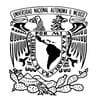Explore all the information on
Swine pre-slaughter management
At all times, prior to slaughter, pigs may experience stress from a range of handling practices, such as fasting, loading and transport, mixing, and interaction with humans. These factors can affect the welfare of pigs and carcass and meat quality, both individually and collectively. Preslaughter stress is both an animal welfare and a meat quality issue.
Behavioral and physiological studies have revealed that poor handling practices at the farm, during transport and at the slaughter plant, have an adverse effect on pigs and may result in the loss of profits due to animal losses during transport and in lairage. Also, poor preslaughter handling can also lead to losses in carcass value as a result of reduced yield, the presence of lesions and bacterial contamination, and meat quality defects (e.g., pale, soft, exudative and dark, firm, dry pork).
These economic losses can be limited by improving the design of facilities, controlling the environmental conditions, and implementing training programs for the correct animal handling at any stage preslaughter.
Recommendations for the transport and handling of heavier slaughter pigs must be adapted to improve ease of handling and reduce transport losses, aggressiveness and fatigue-related meat quality defects. The response of pigs to pre-slaughter physical stress and feed deprivation can be affected by ractopamine dietary supplementation, feed composition and feeding regime.
Comments related to #Swine pre-slaughter management
Top 10 content about #Swine pre-slaughter management
















